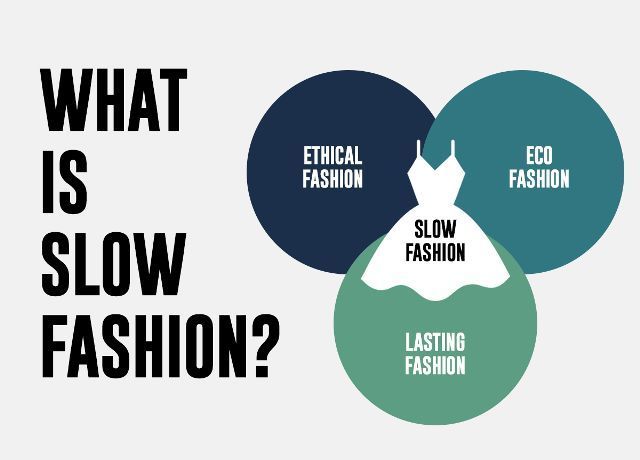Sustainable fashion terminology can be confusing to most. Like many other industries, fashion is shaped by economic and political forces. It is like a living organism – always evolving and changing. I’m sure – like me – you must find it hard to keep up with all the terminology used by industry insiders. Not only are there new words and labels emerging, but often they overlap in meaning and it is confusing to know what they all mean exactly.
So, here is a handy guide that will clear up the confusion. Even help you understand, if you are in fashion, what you should look out for and stand for.
Conscious Fashion
Conscious fashion is a catch-all term. It is often used by people to imply “sustainability”, “ethical” practices or “eco”. Some brands use the name to imply “mindful” and “purposeful” and in fact even use it as part of the brand name. They don’t always have to be a sustainable fashion brand, though some may be. It is best to check for more information on their website and even contact them to verify if that is something that is of real importance to you.

Slow Fashion
Slow fashion is the opposite of “fast fashion”. It is a movement started by small independent bards that decided to oppose the cyclical nature of the conventional fashion calendar. Brands that describe themselves as slow fashion” do not design to seasons or release seasonal collections. They create products that are long-lasting in terms of design ethos and style, as well as wearability and quality.
Being a sustainable fashion brand is not a pre-requisite to being part of the slow fashion movement.
The two are not mutually exclusive and many brands identify themselves in fact as slow fashion, while not being sustainable.
Ethical Fashion
Ethical is one of these words that is widely used and more often than not actually MISused. People often use it to imply a product is perhaps “cruelty-free” or something like “ethical leather” or “ethical fur” is good and kind to the planet as opposed to the natural, real thing.
Sadly – this is the wrong way to use this descriptive term. What ethical in fact should be used for and refer to is how people are treated. It is a terminology that is people related. How are workers treated at their place of work? Are they paid fairly? Are they of legal age? What is the impact factories and working places have on the surrounding community?
Companies that truly care about the ethical treatment of the workers that make their products should be prepared to offer full transparency and disclose figures and evidence that they adhere to their values, make the necessary checks and comply with the principles of being “ethical”.
Fairtrade Fashion
Fairtrade was a hot topic a few short years ago. When properly used, it should refer to the practice f paying a “fair wage” to workers form marginalised communities that contribute to the fashion industry. Such communities, for example, can be the mining communities that mine precious and semi-precious stones. Historically these communities were slave labour operated and exploited.
The term “fair trade” implies that wages must not fall below a market rate.
It further refers to ethical working conditions and certifications. However, this is easier said than done. If you were to search for a fair trade organisation, you’ll notice various companies that promote the practice. Some of the better ones to use and get more information form are as Global Organic Textile Standard, Cradle to Cradle or the Better Cotton Initiative. But “fair trade” should not be confused for “ethical” and ‘sustainable fashion”. It is possible for a brand to be “fair trade” and in fact operate in a manner that is harmful to the environment.
Sustainable Fashion
So what is sustainable fashion? What makes a brand “sustainable”?
The term is widespread in not only in fashion but in other industries that manufacture products. It refers to the effect that manufacturing has on the environment and the planet we live in. Sustainability is the practice of creating products by taking resources from the environment we live in and ensuring that, at the end of the product life cycle, the product will return back to the earth without harming it. Sustainable products should always be able to biodegrade. But the reality is that this is still largely work in process and it is hard to ensure this happens Least of all because for a biodegrading process to take place, oxygen is required, and many landfills are so densely packed there is no oxygen flow.
So instead, many fashion brands today refer to themselves as sustainable if they manufacture locally (and save on carbon footprint). If they use sustainable materials made from recycled plastic for example. Or if they have a scheme that encourages customers to bring back old products to be repurposed as opposed to just thrown out. While this is not truly sustainable – being 100% sustainable is still far off being truly possible and feasible to achieve.
Organic Fashion
Organic refers to materials usually. They are natural fibres being grown and produced without the use of chemical pesticides in the growing process. One of the biggest environment polluters is cotton. So, as a result, there is a great effort made for organic cotton to be widely produced and easily available to fashion brands.
Cruelty-free Fashion
Cruelty-free is relatively new for fashion. Until recently it was mostly used in the beauty industry to imply that products were not tested on animals. Today, the term also is used in fashion and refers to products made out of materials that do not contain animal products and no animals were harmed in the process of manufacture both the material and the product.
Finally, since fashion is such a “smoke and mirrors” industry, where ego and vanity reign, not all brands who use the terms above actually truly qualify as being sustainable, ethical… etc. So when a brand is found to be misleading and not be what they say they are – the term Greenwashing is used to describe them.
Greenwashing
Claiming sustainability credentials is common practise by many brands knowingly or not. Many large brands may have a tiny portion of products or a limited collection that is sustainable and decide to use the term “sustainable” to promote themselves. Unfortunately, as this is misleading – they are in effect greenwashing the customers. In other words – duping them into thinking they are something they are not.
Hopefully, the above sustainable fashion terminology listing above helps you clearly differentiate in your mind now what the terms really mean and what is meaningful to you the consumer.
If anything grabs your interest, dig deeper and research. There is no point to pay lip service to something and be questioned and found out to be unauthentic later down the line. This sustainable fashion terminology is just a small scratch of the surface.




